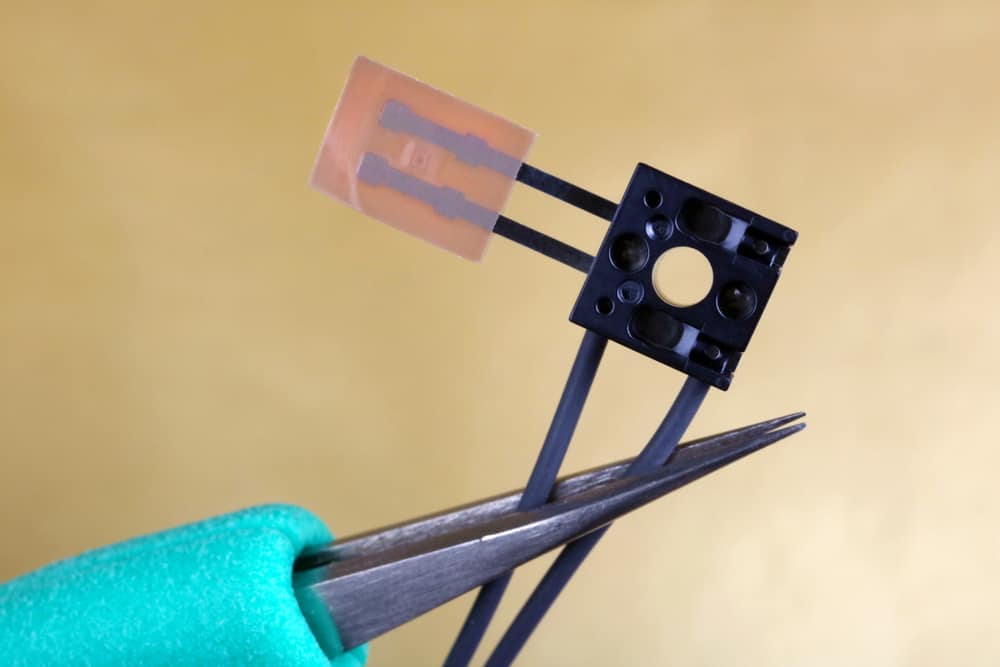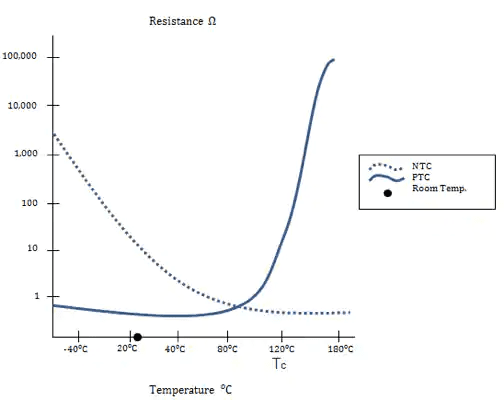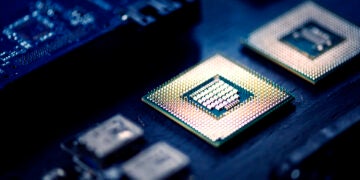
Thermistors are small resistive chips that are highly sensitive to temperature changes
The thermistor shown above is just one example of a small form factor temperature probe that can be mounted directly on a circuit board. An NTC thermistor is one example of an on-board sensor that doesn’t require complex supporting circuitry for precise measurements. One popular thermistor is the NTC0805J10K, a surface-mount chip component in 0805 packaging that can be reliably used from below-freezing to above-boiling temperatures.
If you want to use a component like the NTC0805J10K in your design, it’s a simple matter to create or find footprints for this component as long as you have supply chain tools at your disposal. Depending on the temperature range you need to probe and the readout method you’ll use, the NTC0805J10K or another thermistor may not be the best choice. Here’s when you should use the NTC0805J10K or a similar NTC thermistor, and where you can get sourcing data for this component.
Understanding Thermistors
Before getting into why you might want to opt for the NTC0805J10K over another thermistor, it helps to understand how these components work. Relating electrical measurements to thermal characteristics is sometimes misunderstood, as the conversion between a measurement and a temperature value depends on the component, the readout method, and the measurement circuit. Also, there are two different types of thermistors you might want to consider, while something like a thermocouple or RTD probe will be a better option in other situations and temperature ranges.
A thermistor is simply a temperature-dependent resistor, meaning its resistance will change when its temperature changes. All thermistors come in two varieties:
- Positive temperature coefficient (PTC): The resistance of a PTC thermistor will increase with temperature. These components can be used for temperature-based current protection in series with a load.
- Negative temperature coefficient (NTC): The resistance of an NTC thermistor will decrease with temperature. These components are often used as shunt current limiters for overcurrent protection, such as a protection circuit for an MCU.
Between these two options, NTC thermistors are often preferable thanks to the shape of their temperature vs. resistance curve. An example that compares two curves for NTC and PTC thermistors is shown below.

Example response curves for typical NTC and PCT thermistors [Source: Digi-Key]
From this curve, we can see that the NTC thermistor has a more linear resistance vs. temperature curve compared to the PTC thermistor. This is quite useful when the device is used for temperature measurement over rather large ranges. In contrast, the PTC curve stays relatively flat, but then it quickly increases above a certain threshold, above which it can have a mostly linear response. This thresholding behavior is one reason PTC thermistors may be preferred for current protection.
The NTC0805J10K Thermistor
NTC0805J10K is a popular NTC thermistor component from TE Connectivity. The nominal resistance is approximately 10 kOhm at room temperature, and the resistance will vary from ~6 kOhm to ~25 kOhm over the rated operating temperature range (-55 °C to 125 °C). This component comes packaged in a 0805 package, although there is also a variant in a 0603 package.
Both variants are part of TE Connectivity’s line of NTC thermistor components. If a 10 kOhm nominal resistance is unsuitable for your application, there are variants available with nominal resistances ranging from 100/4700 Ohms (0805/0603 packages, respectively) to 150 kOhms maximum.
Alternatives to Thermistors
So, what is the benefit of a thermistor over some other temperature probe? Two common options are thermocouples and resistance-temperature detector (RTD) probes. The table below shows a summary comparison of these three common temperature sensors.
| Thermistor | Thermocouple | RTD probe | |
| Usage | Placed directly on a PCB, so it only senses the temperature on the board | Small probe that can be inserted into a location for targeted measurements | Similar to a thermocouple |
| Materials | Uses a ceramic material | Two dissimilar metal leads | Metal wire |
| Temperature range | Bounded in a small range around room temperature (up to ~300 °C) | Used for very high temperatures reaching ~2000 °C | Used for moderate temperatures reaching ~700 °C |
| Readout | Direct resistance measurement | Requires measuring the voltage between the two metals, often with a chip like the MAX6675 | Direct resistance measurement, equivalent to a PTC thermistor |
| Accuracy | 10-2 to 1 °C | 10-1 to 10 °C | 10-1 to 1 °C |
| Linearity | NTC: Mostly linear PTC: Nonlinear |
Nonlinear | Mostly linear |
| Noise susceptibility | Low | High | Low |
The major drawback of a thermistor is its fixed mounting directly to the board and its limited temperature range. This makes these components useful for measuring the temperature around specific components or the board itself, but not much else. Still, this would explain why these parts are often used for thermal protection of on-board components. The exception is if a thermistor is mounted on an external board that is connected with a 2-wire cable. This external board could then be inserted into some target location and used for very accurate temperature measurements near room temperature.
Finding NTC Thermistors
There are many different NTC thermistor options from multiple distributors and component manufacturers, and it’s important to use a quality electronics search engine to find parts. You’ll need more than sourcing information, you’ll also need footprints for your through-hole or SMD components as well as 3D STEP models for use in your CAD tools. If you want to build a new design with an NTC or PTC thermistor, you can find the components and CAD models you need with an electronic parts search engine.
The next time you need to find an NTC0805J10K datasheet, sourcing information, or CAD models, try using the electronics search engine features in Ultra Librarian. In addition to component data, you’ll have access to verified component models that can be imported into popular ECAD applications. You’ll also have access to sourcing information from worldwide distributors.
Working with Ultra Librarian sets up your team for success to ensure streamlined and error-free design, production, and sourcing. Register today for free.











